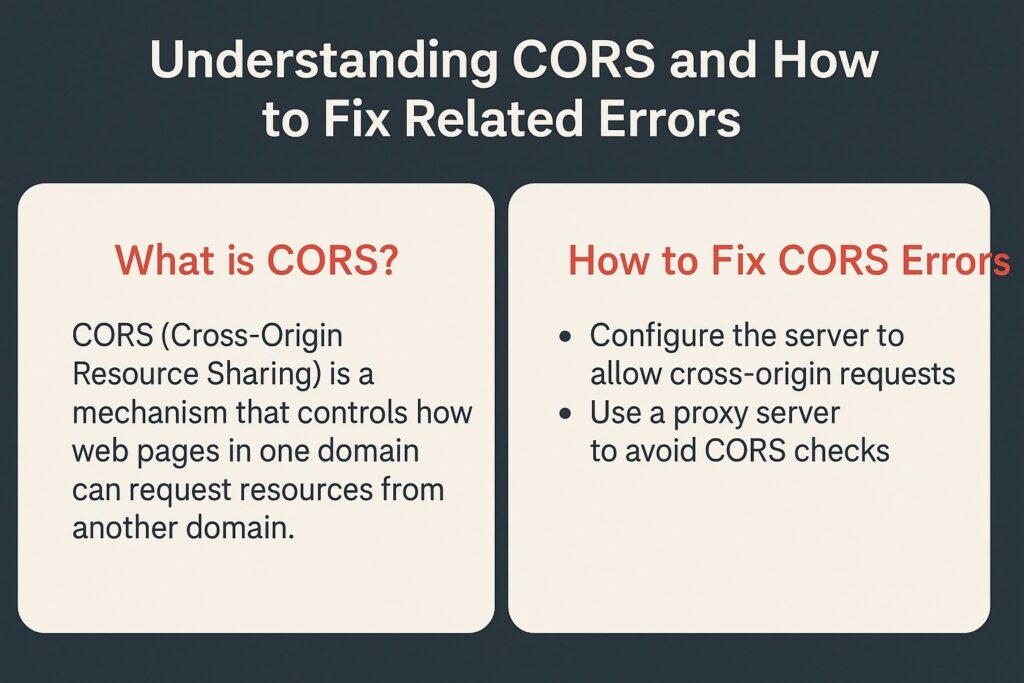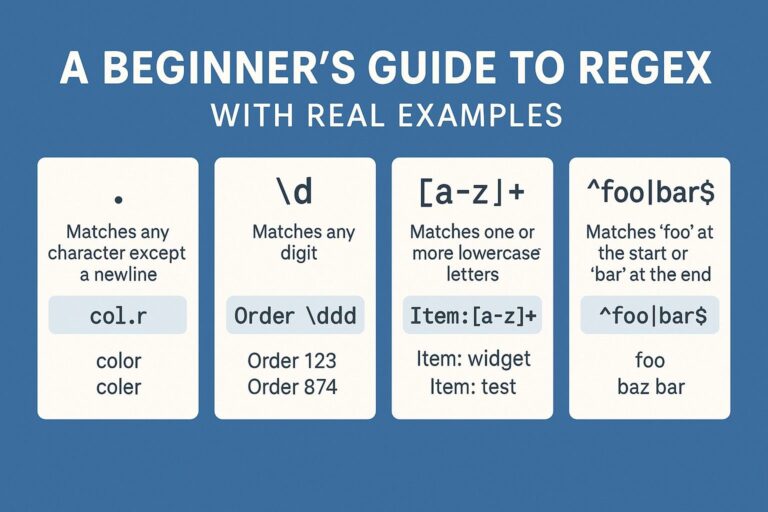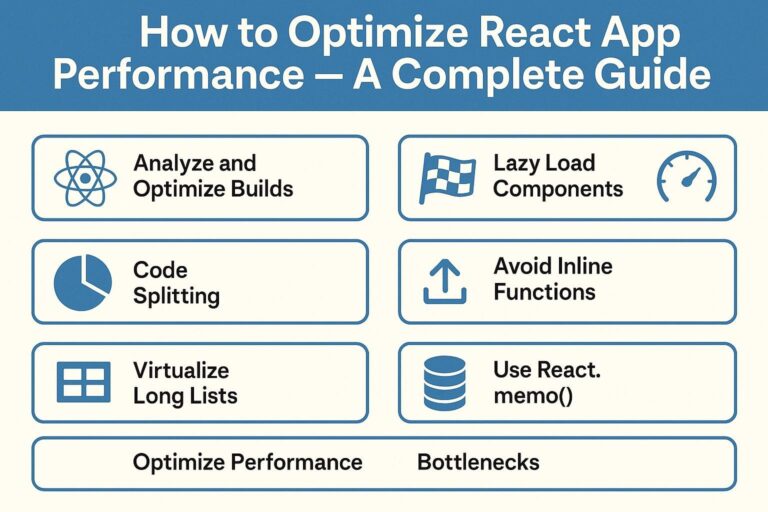
As a web developer, you’ve likely encountered the dreaded CORS error when trying to make requests between different domains. While frustrating at first, understanding what CORS (Cross-Origin Resource Sharing) is—and how to properly configure it—can save you hours of debugging.
In this guide, we’ll break down what CORS is, why it exists, common scenarios where it causes issues, and most importantly—how to fix CORS errors effectively.
What is CORS?
CORS is a security feature implemented by browsers to prevent malicious websites from making unauthorized requests to other domains. It is part of the Same-Origin Policy, which restricts how resources from one origin (domain, protocol, and port) can interact with resources from another.
Without CORS, frontend JavaScript code running on https://example.com would not be allowed to fetch data from https://api.otherdomain.com.
CORS enables controlled access to resources outside of the current origin. The server being accessed must explicitly allow such cross-origin requests by sending specific HTTP headers.
Why CORS Exists
CORS is designed to:
- Protect users from cross-site request forgery (CSRF) and data leaks
- Prevent malicious scripts from accessing sensitive data on another site
- Ensure that servers maintain control over who can access their resources
Understanding a CORS Error
A typical CORS error in the browser console might look like this:
Access to fetch at 'https://api.example.com/data' from origin 'https://myapp.com' has been blocked by CORS policy: No 'Access-Control-Allow-Origin' header is present on the requested resource.
This means the backend did not explicitly allow the origin 'https://myapp.com' to access its resources.
Key CORS Headers
To resolve CORS errors, you need to understand these important HTTP headers:
- Access-Control-Allow-Origin
Specifies which origin(s) are allowed. Example: arduinoCopyEditAccess-Control-Allow-Origin: https://myapp.com - Access-Control-Allow-Methods
Defines the HTTP methods permitted for the request: pgsqlCopyEditAccess-Control-Allow-Methods: GET, POST, PUT, DELETE - Access-Control-Allow-Headers
Lists headers that the client is allowed to use: pgsqlCopyEditAccess-Control-Allow-Headers: Content-Type, Authorization - Access-Control-Allow-Credentials
Indicates whether cookies or HTTP credentials should be included in the request. Example: yamlCopyEditAccess-Control-Allow-Credentials: true
Simple vs. Preflight Requests
Simple Request
A request that meets all of the following conditions:
- Method is GET, POST, or HEAD
- Headers are simple (e.g.,
Accept,Content-Typewith valueapplication/x-www-form-urlencoded,multipart/form-data, ortext/plain) - No credentials
These don’t trigger a CORS preflight.
Preflight Request
For other requests (like PUT, DELETE, or those with custom headers), the browser sends an OPTIONS request first—called a preflight—to ask the server if it’s okay.
Common CORS Scenarios & How to Fix Them
1. Frontend to Backend on Different Domains
Issue: Frontend app on https://myfrontend.com calling API on https://api.mydomain.com
Fix (Node.js/Express):
const cors = require('cors');
app.use(cors({
origin: 'https://myfrontend.com',
methods: ['GET', 'POST'],
credentials: true
}));
2. During Local Development
Issue: React/Vue dev server on localhost:3000 calling API on localhost:5000
Fix:
- In Express backend: jsCopyEdit
app.use(cors({ origin: 'http://localhost:3000', credentials: true })); - Or use a proxy in React: jsonCopyEdit
// package.json "proxy": "http://localhost:5000"
3. Flask or Django Backend
Flask:
from flask_cors import CORS
CORS(app, origins="http://localhost:3000")
Django:
Install django-cors-headers:
pip install django-cors-headers
In settings.py:
INSTALLED_APPS = [
'corsheaders',
...
]
MIDDLEWARE = [
'corsheaders.middleware.CorsMiddleware',
...
]
CORS_ALLOWED_ORIGINS = [
"http://localhost:3000",
]
4. Allowing All Origins (Not Recommended for Production)
app.use(cors()); // Allows any origin
Security Considerations
- Never allow
Access-Control-Allow-Origin: *when using credentials. Browsers will block it. - Avoid allowing all origins in production unless your API is truly public.
- Whitelist only necessary domains.
- Use HTTPS to avoid mixed content and secure the communication.
How to Debug CORS Issues
- Use browser dev tools (check Network tab and Console)
- Check OPTIONS preflight request responses
- Ensure backend is actually sending CORS headers
- Verify you’re not violating the Same-Origin Policy unintentionally
Final Thoughts
CORS errors are not bugs—they’re intentional browser safeguards. Understanding how CORS works allows you to architect secure and flexible web applications. The key is proper backend configuration and knowing when preflight requests are triggered.
By sending the right headers and adopting best practices, you can eliminate CORS errors and enable safe cross-origin communication between your frontend and backend.

I’m Shreyash Mhashilkar, an IT professional who loves building user-friendly, scalable digital solutions. Outside of coding, I enjoy researching new places, learning about different cultures, and exploring how technology shapes the way we live and travel. I share my experiences and discoveries to help others explore new places, cultures, and ideas with curiosity and enthusiasm.






